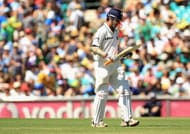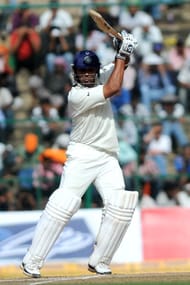Sunil Gavaskar and Chetan Chauhan opened the batting for India, braving the ferocious West Indian bowling attack of the seventies with utmost authority. And for a long time, they were considered India’s best opening pair to have played Test cricket. That is, of course, till the arrival of Sehwag – Gambhir sometime in mid-2004.
Over the last few years, the Viru – Gauti pair has redefined the way we watch Test cricket. Sehwag, with all his natural aggression, flayed the best of bowling attacks. And Gambhir, with a cool, balanced head on his shoulders, rotated the strike with ease, proving to be a perfect foil for Sehwag. Viru enchanted one and all with his free flowing strokeplay; while Gauti’s solid defensive technique would have made the Dravids and the Kallises proud.
And then things started to go terribly wrong.
When players do well, the sequence of their statements is almost predictable – that they do not play for numbers, but for the “love” of the game, or for the “honour” of their country. When form eludes them, however, it is these very numbers that they try to hide themselves behind. True, Sehwag’s career average is still 52 odd. True, Gambhir’s career average is still 44 odd. But as the saying goes, one is only as good as his last innings. Statistics never lie. And one glance at the stats reveal some ugly truths.
In Tests where India has ended up on the winning side, Virender Sehwag averages 52.78; and Gambhir 46.11. In losses, Sehwag averages a paltry 28.94 and Gambhir a pathetic 26.93. In the last two years, the two have put together only 861 runs in 24 innings, at an average of 35.87. Basically, they’ve lasted about 8 overs per innings on average. That means that the number 3 has had to come in just about half an hour into the team’s innings. Gambhir has not managed to touch triple figures for more than three years now. Just 787 runs, at an average of 28.10 over the last two years does no justice for a batsman of his calibre. Sehwag hasn’t exactly set the world alight either. 32.03 is not an average that an opening batsman would be proud of, and unfortunately, that’s been his average return in Tests starting the disastrous English tour in 2011.
The Sehwag – Gambhir combination once sent shivers down the spines of the most potent of bowling attacks. However, over the last couple of years, both Sehwag and Gambhir have been walking wickets. Sehwag has been his irresponsible self, throwing away his wicket ever so often after getting a start, while Gambhir has spent major part of his last three years poking at balls outside the off stump, overlooking the ABC’s of the technique he had taken so long to master.
Now, can India afford an opening pair so inconsistent that they make Namibia’s openers look reliable? Almost every Test win in the recent past has one common feature – Sehwag and Gambhir getting India off to a brisk start, providing ample cushion for the next man in. And in the last two years, the failure of the Sehwag – Gambhir partnership has had catastrophic effects on the team’s performance. A 4-0 thrashing at the hands of England in England. A 4 -0 whitewash Down Under. Another series loss to England; this time 2-1, despite India being self-proclaimed “tigers” at home.
But if not Gambhir and Sehwag, who are the possible players the nation can count on? What are the options on the selectors’ plate? Who are the batsmen who can see off the new ball and still score at a good rate, something we’ve got so accustomed to watching Sehwag and Gambhir do?
Wasim Jaffer, like wine, seems to get better with age. Though basically anyone would prefer a younger alternative to someone who is touching 35, Jaffer continues to make his case stronger every match. Three centuries and five fifties highlight the sublime touch he has been in this season, and the presence of the seasoned veteran like him might do wonders in helping a team struggling with seemingly relentless issues of transition.
Murali Vijay doesn’t seem to get tired of showing off his class. Despite a forgettable Ranji season, littered with below par performances, he was fortunate enough to be selected for Rest of India. Good players seize every opportunity they get. And Vijay’s visibly better than most. A free flowing 116 against Mumbai in the on-going Irani trophy surely wouldn’t do his chances any harm.
Ajinkya Rahane is another option the selectors can consider. Already having replaced Sehwag at the top of the order in the ODI arena, there’s no doubting his obvious talent. After 59 first class games, he averages 62.23. Clearly, there is no reason to be sceptical about his consistency either.
And this season saw the emergence of Jiwanjot Singh. With an eye catching double century on debut, the Punjab opener amassed 995 runs at a more than healthy average of 66.33. Both Jiwanjot and Rahane possess numbers that speak for themselves. Numbers, that must have gotten them a place in the back of the selectors’ minds. The issue, of course, is coming in front.
There are one billion people in India. There is no dearth of talent. So, how much longer a rope will the selectors hand Sehwag and Gambhir? The committee meets on February 10th to pick the squad for the Australia series. Will we see the much needed change in the top of the order, or will the five wise men continue to be selectively benevolent, and continue to favour reputation over form?
Click here to get India Squad for T20 World Cup 2024. Follow Sportskeeda for the T20 World Cup Schedule, Points Table, and news


